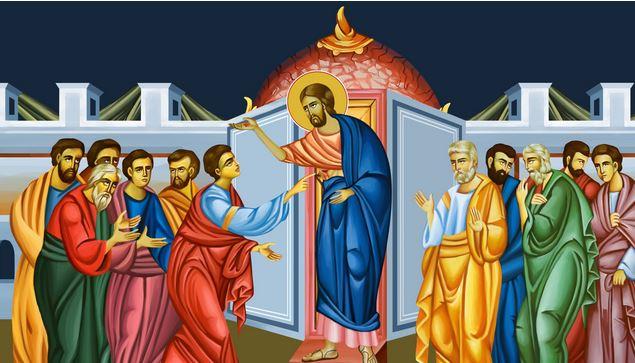Thomas Tradition

The Thomas Tradition refers to a group of early Christian beliefs, writings, and communities that are associated with Thomas the Apostle, sometimes known as Doubting Thomas. The tradition, often called the Thomasine tradition, emphasizes certain texts and interpretations of Christianity that differ somewhat from the orthodox teachings found in the canonical New Testament. This tradition is mainly linked to the Gospel of Thomas and the communities that revered the apostle Thomas.
Here’s a breakdown of what the Thomas Tradition involves:
1. The Gospel of Thomas:
-
One of the most important texts in the Thomas Tradition is the Gospel of Thomas, a collection of sayings attributed to Jesus, discovered in Nag Hammadi (Egypt) in 1945. The Gospel of Thomas is often considered part of the Gnostic Gospels, though it doesn't fully fit into the Gnostic tradition.
-
The text is unique in that it focuses primarily on sayings (or logia) of Jesus rather than narrative events like his birth, death, or resurrection. It contains 114 sayings, many of which echo themes of mystical knowledge, self-discovery, and the direct experience of the divine.
-
The Gospel emphasizes the idea that divine knowledge (gnosis) can lead to salvation, rather than reliance on traditional religious rites or belief in a narrative salvation through Jesus' crucifixion and resurrection.
-
Some famous sayings from the Gospel of Thomas include:
-
"Whoever finds the interpretation of these sayings will not taste death."
-
"If you bring forth what is within you, what you bring forth will save you. If you do not bring forth what is within you, what you do not bring forth will destroy you."
-
2. The Role of Thomas the Apostle:
-
Thomas the Apostle is central to this tradition, known for his initial skepticism or doubt regarding the resurrection of Jesus. The famous phrase "Doubting Thomas" comes from his demand for physical proof of Jesus’ resurrection (John 20:24-29). However, Thomas' later affirmation of faith, when he encounters the risen Jesus, is often seen as profound and symbolic of a journey from doubt to spiritual insight.
-
In the Thomasine tradition, Thomas is sometimes portrayed not as a doubter, but as a seeker of truth. His journey is viewed as one of deepening understanding and spiritual awakening.
3. Gnostic Influence:
-
The Gospel of Thomas shares many similarities with Gnostic texts, which emphasize secret knowledge (gnosis) as the key to salvation. In Gnosticism, salvation is seen as an awakening to the divine knowledge that lies within each individual.
-
The Thomasine tradition often highlights the inner, mystical experience of Jesus’ teachings, in contrast to the more outward, institutionalized Christianity that developed in the early Church.
4. Thomas in Eastern Christianity:
-
Thomasine Christianity also has historical connections with early Christian communities in the East. The Syrian Christian tradition and the Church of the East (often called the Assyrian Church) trace their origins to the missionary work of Thomas the Apostle, who is believed to have traveled to India and established Christian communities there, particularly in the region of Kerala.
-
The St. Thomas Christians in India maintain a tradition that traces their heritage back to Thomas the Apostle, with many churches in the region claiming direct apostolic foundation by Thomas. This group continues to emphasize the apostle’s missionary activities in the East.
5. The Search for Knowledge and the Kingdom Within:
-
One of the key themes in the Thomas Tradition is the idea that the Kingdom of God is not something external to be sought through religious rituals or external authorities but is instead something that can be realized within oneself.
-
The Gospel of Thomas reflects this idea, particularly in sayings like:
-
"The Kingdom of God is inside of you, and it is outside of you."
-
"When you make the two one, and when you make the inside like the outside and the outside like the inside, and when you make the male and the female into a single one, so that the male will not be male nor the female be female... then you will enter the Kingdom."
-
-
This reflects the emphasis on inner spiritual knowledge and the realization of divine truth as an experience accessible to all.
6. Controversies and Orthodox Rejection:
-
The Gospel of Thomas and the broader Thomasine tradition were largely rejected by the early orthodox Christian church and excluded from the New Testament canon. The Catholic Church, in particular, did not accept the Gospel of Thomas or the ideas it represented as orthodox Christianity.
-
The reasons for this exclusion include the text's emphasis on personal, mystical experience over doctrinal belief, as well as its Gnostic-like elements, which were considered heretical by early church leaders.
7. Modern Interest in the Thomas Tradition:
-
In modern times, particularly with the discovery of the Nag Hammadi Library and the translation of the Gnostic texts, there has been renewed interest in the Thomas Tradition and the Gospel of Thomas. These texts are seen by many scholars and spiritual seekers as offering a more mystical and esoteric perspective on the teachings of Jesus.
-
Some contemporary Christians, as well as people exploring New Age spirituality, find that the Gospel of Thomas resonates with their own experience of seeking deeper, more personal knowledge of the divine.
Conclusion:
The Thomas Tradition represents a rich, mystical branch of early Christianity that emphasizes direct knowledge of the divine, self-realization, and the inner journey toward spiritual enlightenment. Through texts like the Gospel of Thomas, the tradition has been both influential and controversial. It offers an alternative perspective on Jesus’ teachings, focusing on personal revelation and the Kingdom of God within, rather than external rituals or dogma.

